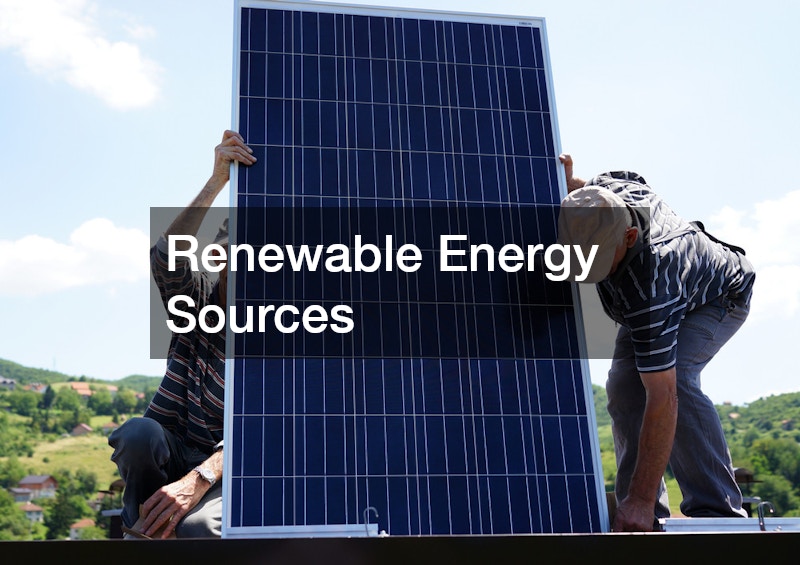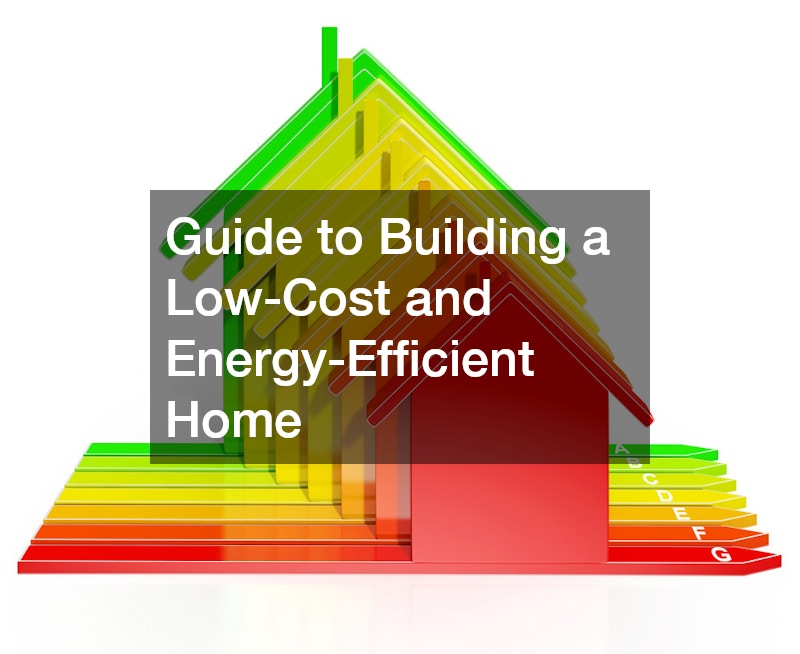Guide to Building a Low-Cost and Energy-Efficient Home
The appeal of traditional homebuilding has waned as energy costs have risen by more than 20% worldwide in the last year. It is now clearer than ever why it is so important to learn how to build a home that is energy efficient. The environment is suffering from inefficient energy practices. Sustainable living is no longer a trend but a necessity.
This blog is intended to help you build a home that’s energy-efficient and budget-friendly. This guide is for homeowners who want to reduce their carbon footprint while not breaking the bank. Sustainable home design is about more than just saving money on utilities. It’s also about creating healthier homes and helping to preserve the environment.
Building an energy-efficient house offers many benefits beyond cost savings. These homes are typically more comfortable due to the stable temperature inside, which is a result of energy-efficient materials and intelligent design choices such as passive solar design or well-planned HVAC systems. You can invest in a house that is built according to these principles, and that will last despite rising energy costs by building a home with respect for them.
Understand Energy Efficiency in Homes
It is important to reduce utility costs and minimize the environmental impact of homes. With the advancement of technology, homeowners can modify or construct their homes in a way that is more energy-efficient. This guide will examine key concepts and practical ways to optimize home energy usage, with a focus on why energy efficiency is important and how it can be implemented through building design and systems upgrades.
Why and How Energy Efficiency?
In order to maximize the energy efficiency of your home, you must make sure that every unit is used. Homeowners can reduce their utility costs and their carbon footprint by improving their energy efficiency. This concept goes beyond using energy-saving devices; it is a holistic approach that involves improving the building’s systems and envelope to minimize energy waste.
Energy efficiency is best understood and implemented with a holistic approach. Not only is it important to choose the right technologies, but also to integrate them into a system that promotes sustainability. This approach takes into account all aspects of the home, from window placement and insulation to the type of heating system.
The Building Envelope: A Guide to Understanding It
The envelope of the building includes all physical barriers that separate the interior from the exterior of your house, including walls, roofs, foundations, windows, and doors. These components are crucial in maintaining energy efficiency because they control heat transfer. When designed and insulated properly, they can help keep homes warm in winter and cool in summer, thus reducing the need to overheat or cool.
Conduction is reduced by effective insulation, convection is prevented by well-sealed corners, and radiation can be minimized with reflective materials or strategic shade. Understanding these mechanisms can help you design a home with a natural temperature.
Choosing Energy-Efficient Systems
For an energy-efficient home, it is important to select the right heating, ventilation, cooling (HVAC), lighting, and water heating systems. These systems are the biggest energy users in a home. If you choose high-efficiency models, you can save a lot of money and energy over time.
It is not enough to choose energy-efficient systems. They must also be installed and maintained correctly in order to operate at their peak efficiency. An improperly installed HVAC unit, for example, can leak air, reducing efficiency and negating all the benefits that come with choosing a high efficiency model. It’s important to use qualified professionals when choosing and installing your home systems.
Build Your Budget-Friendly, Energy-Efficient House
A budget-friendly and energy-efficient house begins with careful planning and intelligent choices for construction and utilities. This guide will cover the essential strategies for achieving efficiency starting from the foundation. We’ll start with the initial phase of design, where we will discuss how to create a tight building enclosure and choose the best windows, doors, and HVAC and water heater systems. We’ll also explore lighting options that are cost-effective. The steps are designed to not only save money on the initial cost but also ensure savings over time through a reduction in energy consumption. This will make your home more sustainable and comfortable.
Plan for Efficiency: Start Smart
Start your energy-efficient project with a thoughtful design. For beginners, focus on the integration of passive solar design. Site selection, floorplan optimization, and solar strategies are all factors that can improve the energy efficiency of your home.
Consider these planning tips to optimize the energy efficiency of your home.
Site Selection
- Assess the sun exposure at different times of the year in order to maximize solar gain and natural light.
- Analyze the local wind patterns in order to increase natural ventilation and reduce the need for mechanical air conditioning.
- Select a location that integrates outdoor living areas with the overall energy design of the home.
Floor Plan Optimization
- Compact floor plans are easier to heat or cool.
- Arrange your living space to make the most of the sun’s path.
- Use storage and utility areas to reduce heat loss.
Passive Solar Design Techniques
- Use south-facing windows in the colder months to maximize solar gain while minimizing exposure in hotter periods.
- Install roof overhangs and awnings for shade in summer, but allow sunlight during winter.
- Use materials with a high thermal mass like brick or concrete in the walls and floors to absorb solar heat and release it slowly.
How to seal the deal: Building a tight envelope
A tight building envelope will help you maintain energy efficiency at home. It involves the use of advanced materials and technologies to keep heat and cool inside your home, thus reducing the burden on your heating and air conditioning systems.
High-Performance Insulation

Choose insulation that has a high R-value to minimize heat flow. Examples include spray foam, rigid boards of foam or cellulose blown in.
Use thicker and more resistant insulation where heat loss is greater.
Air Sealing Strategies
Use caulking around windows and doors to seal them against air leakage.
Spray foam insulation can be used to fill in gaps and holes, for example where electrical and plumbing services enter the structure.
Thermal Bridges: Addressing the Issue
Find areas that are insulated by materials like concrete slabs and metal window frames. Thermal breaks or insulating material around these points will reduce heat transfer.
Selecting the Right Windows and Door
It is important to choose the right doors and windows for your home in order to increase its energy efficiency. These components play a major role in controlling the climate of your home and preventing energy waste.
Window Type
Double-paned Low-E (Low-Ess) windows will reflect heat into the room in winter and keep it out in summer.
Consider the U-factors and solar gain coefficients when choosing a window.
Door insulation and air Sealing
Look for doors that have high insulation values. Install the seals tightly to prevent leaks. Use weather strips and caulking to improve performance.
The Basics of Energy-Efficient HVAC System
It’s not just about choosing an energy-efficient HVAC system. You also need to consider the features of the system that will help you conserve energy and control the climate in your home.
High-Efficiency Furnaces & Air Conditioners
Search for units that have high SEER ratings (Seasonal energy efficiency ratio), which indicate superior energy efficiency. Models with variable-speed motors can adjust the airflow according to demand. This improves comfort and reduces energy consumption.
Heat Pumps
Heat pumps combine heating and cooling into one compact unit, making them the ideal choice for climates that have moderate heating and cooling requirements. Check if the HSPF (Heating-Seasonal Performance Factor) of a heat pump matches your energy and climate goals.
The Design and Sealing of Ductwork
Make sure that the ducts have been designed to reduce sharp bends, long runs, and other factors which may affect efficiency.
Sealing all ductwork to prevent leaks is essential. These can seriously affect the efficiency of your system and your home’s comfort.
Save money and energy with Hot Water on Demand
It is important to have an efficient hot water system in order to reduce energy costs and increase the eco-friendliness of your home. You can save money by exploring different heating options.
Tankless Water Heaters
These systems are able to heat water without the use of a tank. They offer energy savings because they eliminate the losses that occur when traditional tank heaters are left on. Be sure to consider the higher initial costs of installation and that your home can handle the higher flow rates required for optimal operation.
Solar Water Heating Systems
Solar heaters are solar panels that convert sunlight to heat. This heat is then transferred into water in a storage tank. The initial costs of installation can be high, but the savings over time and the low impact on the environment, especially in warm climates, often make up for the initial cost, particularly when the weather is sunny.
Light the Way to Efficiency
Lighting strategies that are effective can enhance both your home’s energy efficiency and its ambiance. You can reduce your energy consumption by choosing the right lighting solution, while still having beautifully lit spaces.
LED Lighting
LED bulbs are recommended for their long life and energy saving compared to conventional bulbs. LEDs also have advanced features such as dimming abilities, which allow for energy savings and mood setting.
Daylight Harvesting Strategies
Use techniques like strategically placing skylights and windows to maximize natural light throughout the day.
Use light shelves and surfaces that reflect sunlight to increase daylight penetration in your home and reduce the need for artificial illumination.
Sustainability in Your Home: Living Green is Sustainable
It’s not only about saving money when you adopt sustainable practices in your home. You are also contributing to a better planet. Integrating a solar power system into your home can be an important step in reducing your carbon footprint and increasing self-sufficiency.
Energy-Efficient Appliances
Investing in ENERGY STAR®-certified appliances for an eco-friendly house is essential. These appliances are more energy-efficient and use less water than standard models. This helps to reduce utility bills, and conserves natural resources.
Here are some ENERGY STAR®-certified appliances to help you make your home more efficient:
Refrigerators
ENERGY STAR®-certified refrigerators can save up to 9% on energy consumption compared to standard models.
Dishwashers
They use advanced technologies to reduce water and energy usage while still providing efficient cleaning results.
Washing Machines
Washing machines certified by ENERGY START(r) use up to 33% less water and 25% less energy than models not certified.
Dryers
They often have moisture sensors that reduce the running time of the dryer and save energy by making sure clothes do not overdry.
Air Conditioners
Certified models are more energy efficient than standard models, with higher seasonal energy-efficiency ratios (SEER) as well as energy-efficiency ratios (EER).
Smart Home Technology
The use of smart thermostats and lighting control can improve the energy efficiency of your home. These devices automate heating, cooling, and lighting. They adjust dynamically according to your lifestyle, usage patterns, and preferences, ensuring that energy is not wasted.
Water Conservation
Installing low-flow fixtures such as showerheads and faucets will drastically reduce your water consumption. To maximize your efforts, combine these practices with other conservation measures, such as repairing leaks quickly and using water-efficient garden techniques.
Renewable Energy Sources

Consider using renewable energy sources, such as small wind turbines or solar panels. These systems can deliver clean energy to your home and reduce your reliance on fossil fuels. Even small installations can result in significant energy savings.
FAQs
What is the cost of building an energy-efficient home?
The cost of building an energy-efficient house can vary from 0-20% over a standard home, depending on the location, the size and any special features such as solar panels or high grade insulation.
Can an energy-efficient home pay for itself in the long run?
Energy-efficient homes will pay for themselves in a few years.
What if you’re renovating an old home?
Consider energy-efficient upgrades for renovations such as adding insulation, upgrading HVAC and replacing windows with ENERGY STAR®-certified products.
Other People Ask
What are the advantages of having a greenhouse?
Green homes have many benefits, including lower energy costs, greater comfort, a higher resale price, and a reduced impact on the environment.
What are some of the most energy-efficient materials for construction?
Double-paned, double-glazed windows and reflective roofing are all energy-efficient materials.
To summarize, building an energy-efficient home requires careful planning, the selection of appropriate materials, and the incorporation of efficient systems to reduce energy consumption and costs. These homes offer not only long-term savings but also increased comfort and a reduction in environmental impact. If you are ready to move forward, reach out to local contractors who specialize in energy-efficient construction. You can also seek further guidance by using resources dedicated to sustainable buildings. A free consultation will also give you personalized insight tailored to your needs and goals.

